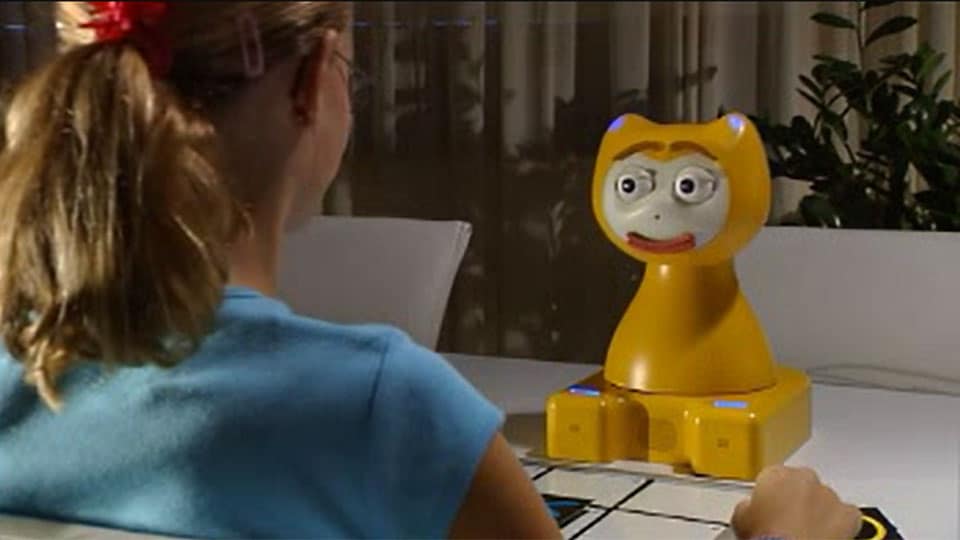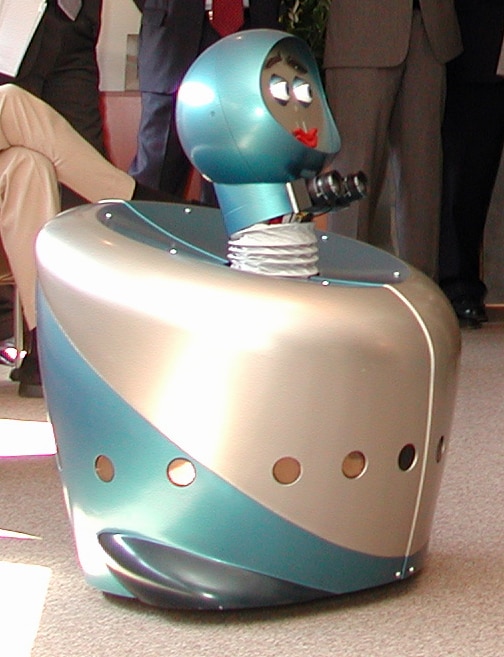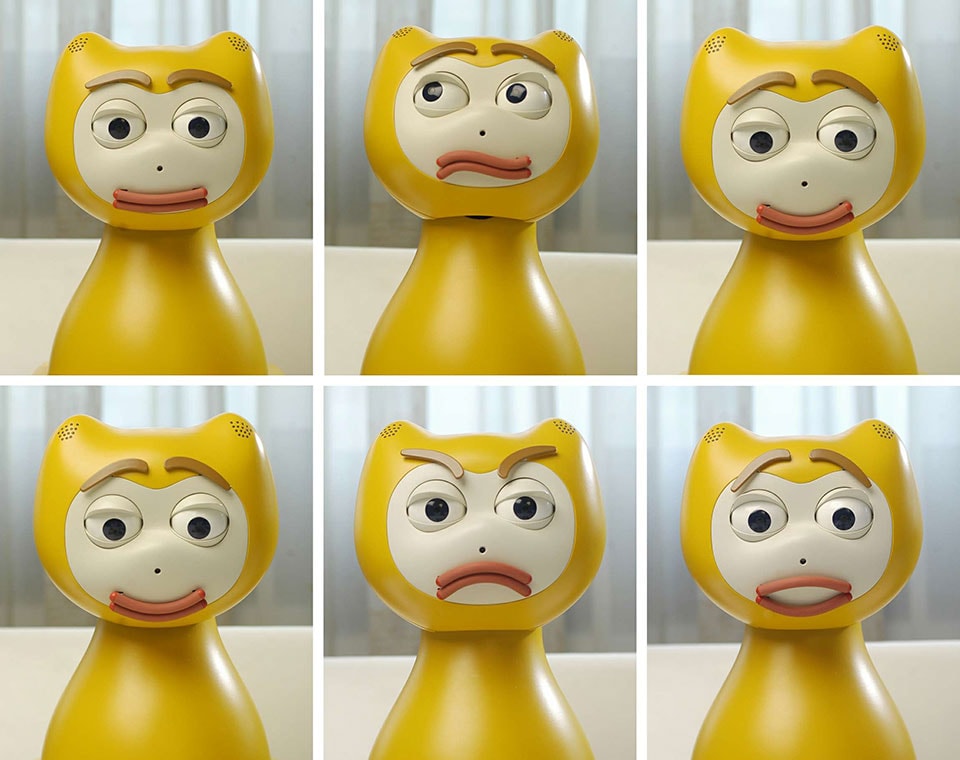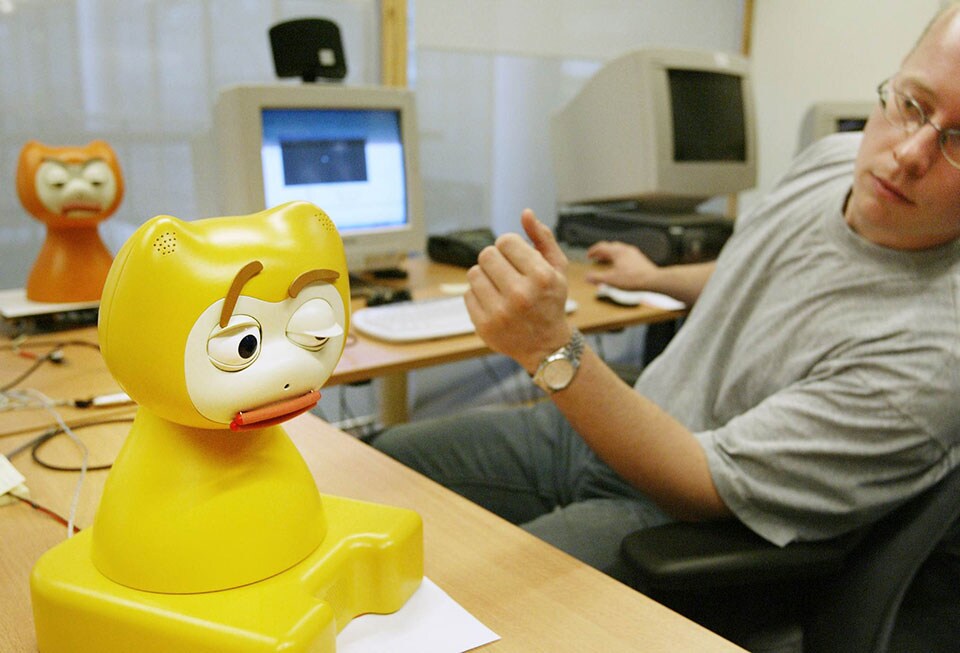The iCat, a precursor to the modern digital assistant, showed almost two decades ago what would be possible in the future. While the concept was not new at the beginning of this century, the addition of the human dimension made the iCat revolutionary. In 2005, the iCat received the Time Magazine Best Invention award.

In 2001, Philips introduced the concept of Ambient Intelligence, a kind of surrounding intelligence. In an ambient intelligence environment, technology responds to people's needs and preferences without receiving explicit instructions. This is intuitive, different devices are connected via the internet and 'think ahead', so to speak. Just your voice is enough to control devices. And that is exactly where the iCat comes in.
The idea behind the iCat is to replace the remote control or computer mouse with a user interface robot as a link between humans and digital technology. This robot can be connected to a home network to control household appliances and to the internet to access information. However, the iCat is more than an appliance controller. She schedules appointments for you and while you search for suitable clothes for the day, she tells you the weather forecast. In the kitchen, she helps prepare healthy meals and before you ask, she lets you hear your favourite music or searches for movies, which can help you relax. Even monitoring the house is among the possibilities.
Before the approximately 38-centimetre tall, yellow, cat-like desktop robot sees the light of day, Philips engineers built Lino, the precursor of the iCat. Lino is equipped with speech technology, a simple facial expression for emotional feedback and moves around the room.
"Initially, we thought that moving and navigating the robot through the house would be very important for users' experience," says Peter Bingley, former Senior Scientist at Philips Research and one of the project leaders of the iCat project. "With Lino, we quickly found out that interaction and dialogue were much more important. So we then developed iCat; a robot that, although it could not move, had a lot of facial expression."

The robot Lino during the Corporate Research Exhibition, 2003
"Shall I tell a joke now?"
With the iCat, Philips engineers are exploring not how a robot should walk or grasp objects, but how to communicate with people.
The iCat responds to touch and understands spoken requests in multiple languages. It also recognises faces, objects and movements. For communication and interaction, it uses body language in addition to speech, such as nodding and other head movements and facial expression. The iCat can be beaming with happiness but also be sad. She tells jokes and in a game of checkers, she gives the opponent emotional signals: she laughs or frowns, depending on the opponent's move. Pieter Bingley: "In some applications, we had iCat tell a joke to investigate how users experienced it. When a task was completed, the iCat would ask: 'Shall I tell a joke now?'"
Philips is at the forefront of this research, with international recognition. In 2005, Time Magazine selected the iCat as one of the "Coolest Inventions of the year". The iCat is made available to universities and research institutes for human-robot communication research.

Human-like user-interface prototype iCat to help users in their daily tasks, 2004
A complex construction process
"A dedicated multidisciplinary team made the development of the iCat possible," adds Peter Bingley, "among others, designers, hardware and software researchers, usability experts, cognitive psychologists and communication specialists were all needed for this. Besides sophisticated software for the expression of emotions and autonomous, independent behaviour, we had to develop a lot of special hardware because no other platforms were available yet."
The iCat communicates not only by speech, but also by coloured light through multicolour LEDs in feet and ears. The colour of the LEDs in the ears indicates whether the iCat is sleeping, awake, busy or listening.
Sensors on the head allow the iCat to sense touch. Each foot contains a microphone that can identify sounds, recognise speech, and determine the direction of the sound source. Through the camera in the head, the iCat recognises objects, faces and movements. And finally, 13 servomotors move her head, eyes, eyebrows, eyelids and mouth to produce the right emotional response.
"One particular problem was the motors," says Peter Bingley, "The sound of them proved to be quite detrimental to users' experience. It was a considerable search for quiet motors. And we succeeded in that too."
Did you know...
Besides the cat, other appearances of the interface robot to be built were considered. Peter Bingley: "But in an initial survey with users based on sketches, the cat scored highest."
Several prototypes of iCat have been made. There are different appearances in yellow, orange, moss green and a computer animation on the screen. There are also iCats with different personalities, such as the "me-focused" Phoebe and the "compassion-toned" Katy. After the initial experiments, it soon became clear that the preference is for the empathetic Katy with more expressive facial expressions.
Ambient Intelligence and the iCat provided useful insights into human-machine interaction. Insights that were of great significance in further development towards Artificial Intelligence.

Experiment robot, iCat, approx. 2004
The iCat in the Philips Museum
The iCat can be seen in real life in the brAInpower exhibition at the Philips Museum. BrAInpower is an exhibition about the many historical, current and future developments in AI.
Text: Miriam Lengová
Source: Philips Company Archives and Peter Bingley, former Senior Scientist at Philips Research and one of the project leaders of the iCat project

